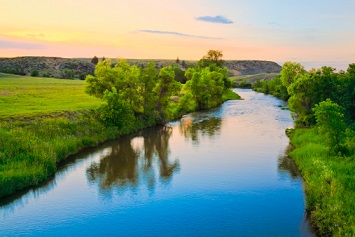The Clean Water Rule (CWR, June 29, 2015, Federal Register), one of the two signature environmental actions of the Obama Administration, has been officially placed on President Trump’s chopping block. In an Executive Order (EO), the president directed the EPA and Army Corps of Engineers (Corps), the two agencies that wrote the CWR, to rescind or revise the rule in a way that is consistent with the following “policy”:
 |
|
dszc / E+ / Getty Images |
“It is in the national interest to ensure that the Nation’s navigable waters are kept free from pollution while at the same time promoting economic growth, minimizing regulatory uncertainty, and showing due regard for the roles of the Congress and the Sates under the Constitution.”
Change in Administrations
The EO was accompanied by a brief notice scheduled for publication in the Federal Register and signed by EPA Administrator Scott Pruitt and Douglas W. Lamont, the interim head of the Corps. The notice announces that the agencies intend to initiate rulemaking consistent with the EO, beginning with a formal proposal. According to the notice, a revised rule is well within an agency’s discretion, and a change in administration brought about by the people casting their votes is a “perfectly reasonable basis for an executive agency’s reappraisal of the costs and benefits of its programs and regulations.”
Significant Nexus
The CWR defined the Clean Water Act (CWA) term waters of the United States (WOTUS). According to the EPA and the Corps, the definition responded to many requests from states and stakeholders who faced a moving target when trying to understand which water bodies and landscape features are under CWA jurisdiction. The Agency said the CWA provided the regulatory certainty that had been lost following several narrow U.S. Supreme Court rulings that created extensive confusion about the reach of the CWA and the authority of the executive branch to implement the Act. Much of the CWR derived from Supreme Court Justice Kennedy’s explication of the term significant nexus, in one of those rulings (Rapanos v. United States, 2006).
The Scalia Opinion
The new EO explicitly departs from the significant nexus basis for the CWR and instead directs that any reconsideration of the rule be based on the opinion of Justice Antonin Scalia, which is also part of the Rapanos record. Scalia noted that it is accepted law that the CWA has jurisdiction over interstate navigable waters. Scalia does concede, and the court has several times made it clear, that the meaning of navigable waters in the Act is broader than the traditional understanding of that term and can certainly include adjacent wetlands. But Scalia adds:
“In applying the definition [of navigable waters] to ephemeral streams, wet meadows, storm sewers and culverts, directional sheet flow during storm events, drain tiles, man-made drainage ditches, and dry arroyos in the middle of the desert, the Corps has stretched the term ‘waters of the United States’ beyond parody. The plain language of the statute simply does not authorize this “Land Is Waters” approach to federal jurisdiction.”
Scalia stated, moreover, that the Corps expansive interpretation would result in a significant impingement of the states’ traditional and primary power over land and water use.
“Regulation of land use, as through the issuance of the development permits sought by petitioners in both of these cases, is a quintessential state and local power,” stated Scalia.
The unauthorized imposition of federal authority on state autonomy has been a constant theme expressed by Pruitt leading up to his confirmation by the Senate and one he repeated after President Trump issued the EO.
Opposition Gets Ready
Developing a rule to repeal or modify the CWR will not be a quick process. Pruitt has emphasized that federal rulemaking must properly and thoroughly consider the views of all stakeholders. While industry organizations have opposed the CWR, most environmental organizations and some states have supported it. Further, any final rule that departs from the definitions in the CWR will likely be challenged in court by many parties. For example, after the EO was released the attorneys general (AGs) of the District of Columbia, Hawaii, Massachusetts, New York, Oregon, and Vermont said in a statement that the president’s EO “runs counter to the Clean Water Act and the EPA’s very purpose: achieving clean water.”
“We won’t hesitate to protect our people and our environment—including by aggressively opposing in court President Trump’s actions that ignore both the law and the public’s paramount need for clean water,” said the AGs.

“While industry organizations have opposed the CWR, most environmental
organizations and some states have supported it.”
That says it all. So much for “states’ rights” and a majority of non-corporate “people”.